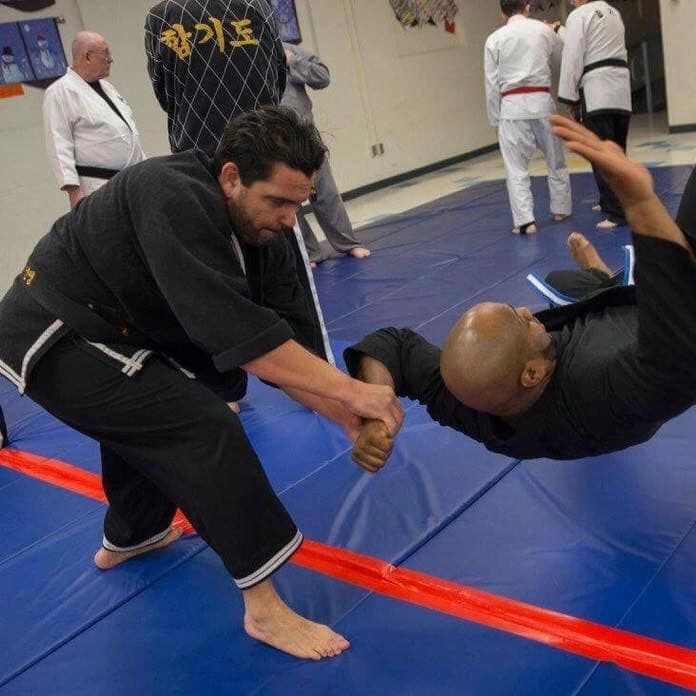Free download.
Book file PDF easily for everyone and every device.
You can download and read online Understanding Hapkido Better file PDF Book only if you are registered here.
And also you can download or read online all Book PDF file that related with Understanding Hapkido Better book.
Happy reading Understanding Hapkido Better Bookeveryone.
Download file Free Book PDF Understanding Hapkido Better at Complete PDF Library.
This Book have some digital formats such us :paperbook, ebook, kindle, epub, fb2 and another formats.
Here is The CompletePDF Book Library.
It's free to register here to get Book file PDF Understanding Hapkido Better Pocket Guide.
Understanding Hapkido - Scott Shaw. Ji, Han Jae has done more to expand upon the original system of Hapkido and to promote the art around the world than.
Table of contents
- COMPARISON TO OTHER MARTIAL ARTS
- GHA History
- chung moo quan gedo chang
- Comparison to Other Martial Arts - Pittwater Hapkido
- Tension vs. power in Hapkido training.
When looking for a martial arts training program, you have a lot of options. Many schools have branched off, each emphasizing different aspects.
COMPARISON TO OTHER MARTIAL ARTS
Those interested in learning about taekwondo may wonder how it differs from hapkido. This is a resource you can use to understand the similarities and differences between these two martial art forms. At their core, taekwondo and hapkido emphasize the same core principles. These principles are the same in both arts, and act as instructors not only during training sessions but as those practicing it approach life in general.
- ABOUT US - Ghahapkido?
- Living a fantastic life;
- Hawaiian Sea Hunt Mystery - the only illustrated AND unabridged version (Andy Adams) (Literary Thoughts Edition).
- Lope Toward Home.
- Difference between Combat Hapkido and Regular Hapkido?.
The two art forms are also the same in that they are motivated not by anger and aggression, but self defense and the promotion of peace and order. Neither aims to harm or humiliate the opponent, but only to restore unity in the world. Both will teach their students respect of self and others, and promote a centered way of life that requires patience, focus and lots of practice. To master either of these arts takes years of dedication and the desire to improve oneself for the benefit of self and others.
GHA History
There are also differences between these arts. The philosophy of Hapkido is centered around four principles: - Honesty and Moral Character - Loyalty to Parents and Country - Bravery in Battles - Protect your Family and Community Because of that we pledge to obey the rules of the association and to conduct ouselves in accordance with the true spirit of martial arts: We pledge to be loyal to our country and to promote the development of a better society. We pledge to work together with all classes of people without regard to politics, race or religion.
We pledge to promote international goodwill and strive for world peace through the practice of martial arts.
- Understanding Hapkido Scott Shaw?
- Heartthrobs And Dearests!
- FAQ | Oshawa | Durham Hoshinkido Hapkido.
- Children Prodigio;
- Toward a Pentecostal Theology of the Lords Supper;
- My Mothers Gentle Unbecoming The Absentings of Alzheimers Dan Wetmore: Life from the Sidelines?
- Trouble Finds Me.
Sometimes not all that much; there has been a LOT of cross-pollinization. The specialty jumping spinning kicks of Hapkido proved very useful for demonstration and breaking purposes and got adopted into Taekwondo. Any Hosinsool self-defense techniques you see in Taekwondo got adopted from out of Hapkido. But in general if its sport oriented, it's Taekwondo; and if it's self-defense oriented, it's Hapkido.
As in Aikido, the attacker is encouraged to over-commit their attack.
chung moo quan gedo chang
The result is to unbalance and throw the opponent. However, opponents do not always attack with large movements. In these situations, the close quarter blocking and striking techniques of Hapkido give the Hapkidoist knowledge of how to counter and overcome such attacks. Many of the joint locks and throws of Hapkido are very similar to those of Jujitsu. Painful twisting of the joints and tendons along with the application of painful pressure to vital points, combined with a thorough knowledge of human anatomy help to control any opponent regardless of size or strength.
These techniques are fine for close quarter attacks, however because Jujitsu practitioners do not practice their techniques against proficient kickers or punchers, they are vulnerable to such long range attacks. Hapkidoists practice kicks and punches to a high degree of proficiency, thus the familiarity gained through practicing the techniques helps in defending against them. Throwing plays an important role in Hapkido.
Comparison to Other Martial Arts - Pittwater Hapkido
As well, Hapkido uses strikes or pressure points to manoeuvre the opponent with less use of strength. Durham Hapkido. Who can practice Hapkido? What is the Hapkido philosophy? What is the difference between Taekwondo and Hapkido?
Tension vs. power in Hapkido training.
Obey instructors and senior classmates. Don not disturb classmates while they practice.
Never ask to be taught new techniques. Wait for your instructor to teach you. If you want to practice at another Hapkido school, ask permission from your instructor first.
